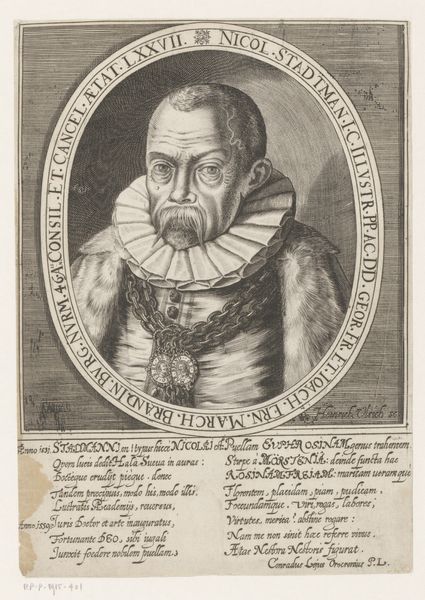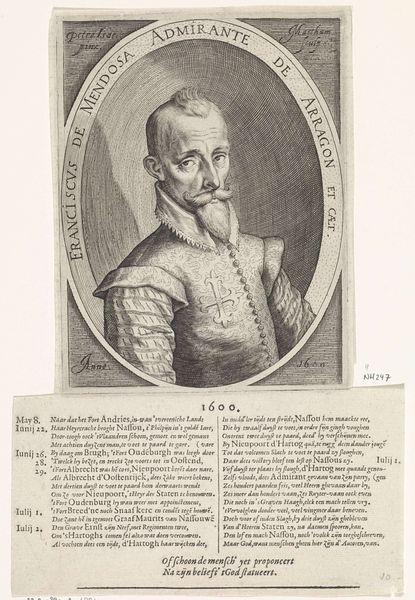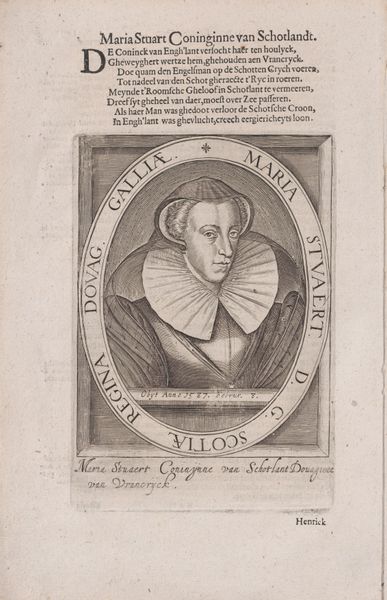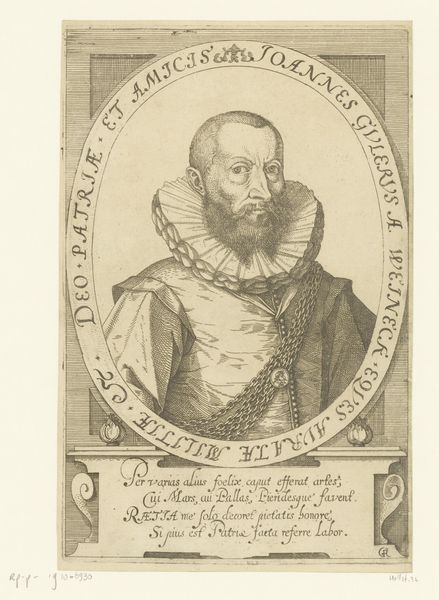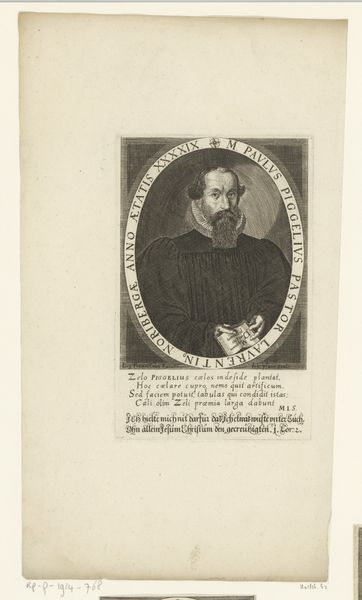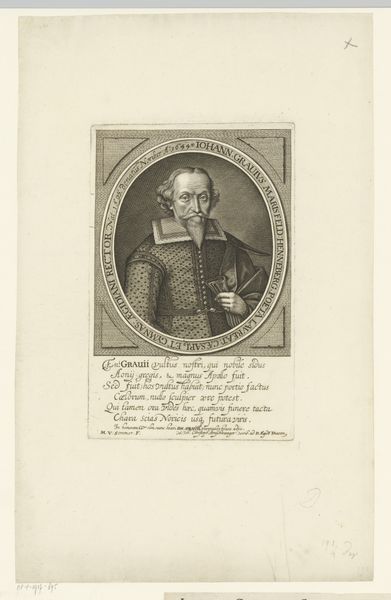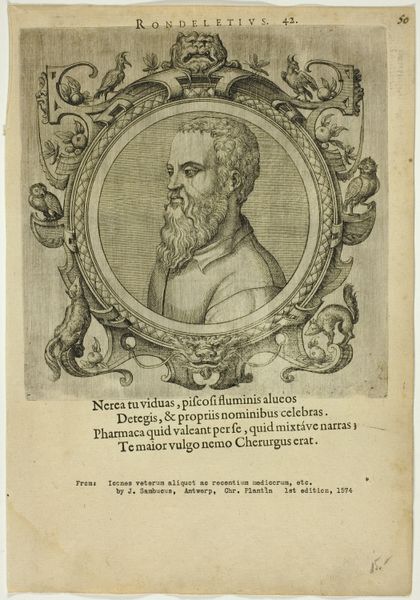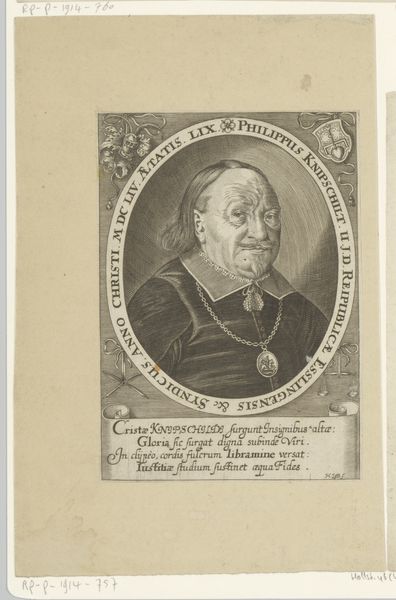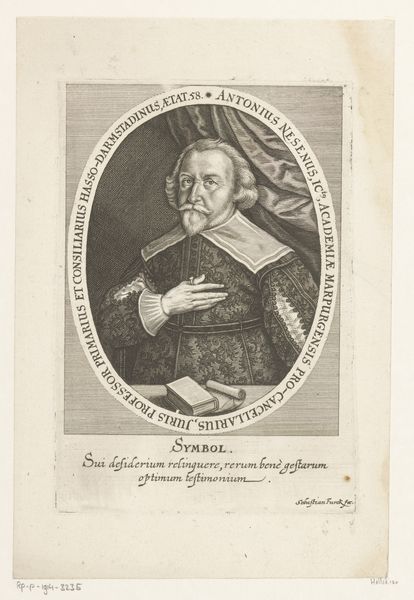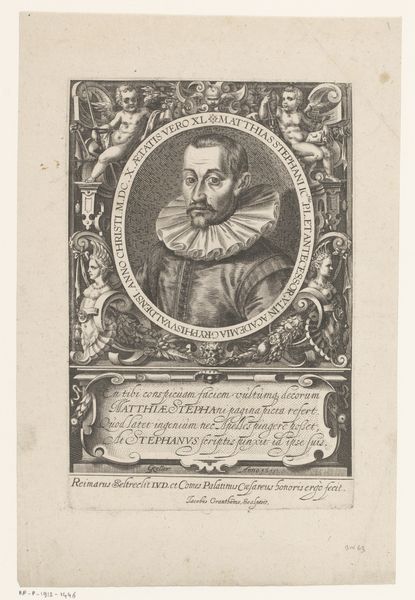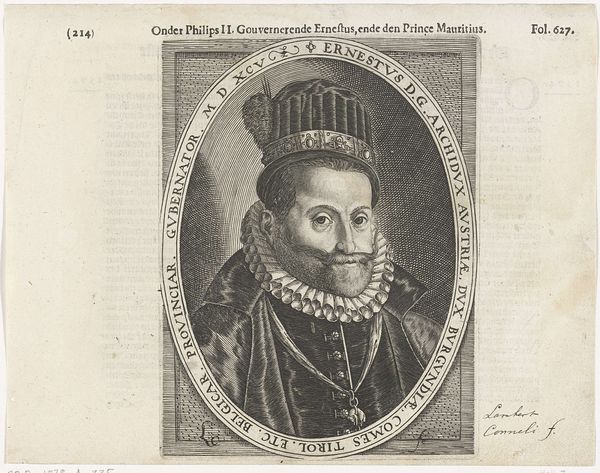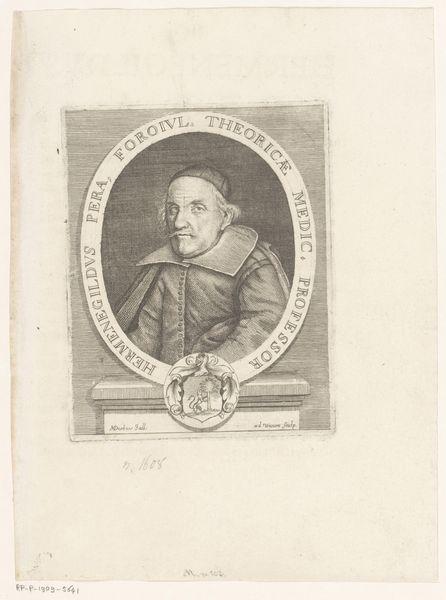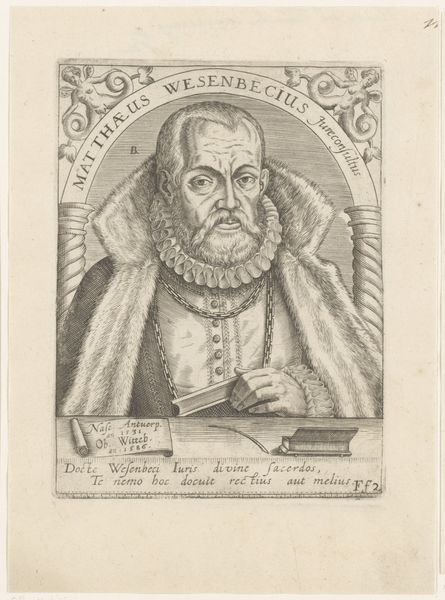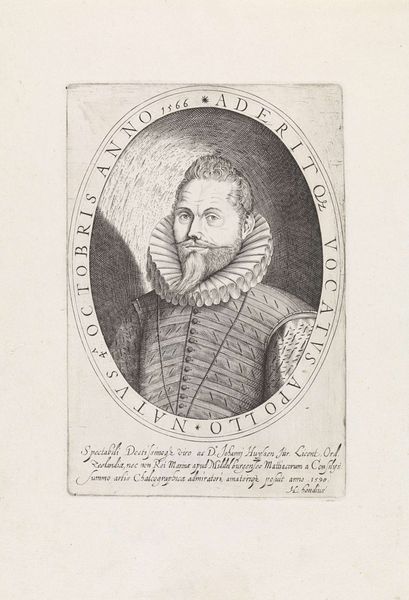
print, engraving
#
portrait
#
baroque
# print
#
figuration
#
engraving
Dimensions: height 135 mm, width 106 mm
Copyright: Rijks Museum: Open Domain
Curator: This print, titled "Portret van Janus Gruterus" from the 1650s-1660s, offers so much to unpack beyond its Baroque aesthetic. Editor: It does! It's interesting how this image, rendered through engraving, portrays such a scholarly figure. It gives the impression of solemnity and importance but also of mass production given it’s a print. What jumps out to you about the material presence of this piece? Curator: Well, the fact that it's a print, specifically an engraving, is crucial. We must consider the labor involved in its creation. The engraver painstakingly cuts into a metal plate, reversing the image. How might this repetitive, skilled labor affect the perception and value of the portrait itself? Is it simply a reproduction, or something more? Editor: I see what you mean! Knowing the process informs how we view it. Were prints like these intended for a broad audience? How did this affect the value placed on such images at the time? Curator: Exactly! Prints allowed for wider dissemination of images. Think about it: this image of Gruterus could have been circulated amongst his colleagues, students, or even sold to a broader literate public. This challenges the aura of exclusivity often associated with portraiture in painting. This availability democratizes access, and perhaps devalues the idea of the singular "masterpiece." The very materiality facilitates this cultural shift. Does the text surrounding the image amplify or perhaps muddy these issues? Editor: It seems to both, it does seem to amplify this man's importance with Latin text, while also repeating him using mechanical means. It seems contradictory. I never really considered all the hands and social implications involved in the production of a print like this. Curator: Precisely! By focusing on the materials, the labor, and the social context, we gain a much richer understanding of the portrait and its significance. These elements were once seen as secondary concerns, now we can recognize they profoundly shape our encounter with the artwork. Editor: It changes everything to see art through a lens of how the means of production affects its meaning. Curator: Indeed. Recognizing these material factors really helps to avoid taking cultural assumptions for granted.
Comments
No comments
Be the first to comment and join the conversation on the ultimate creative platform.
